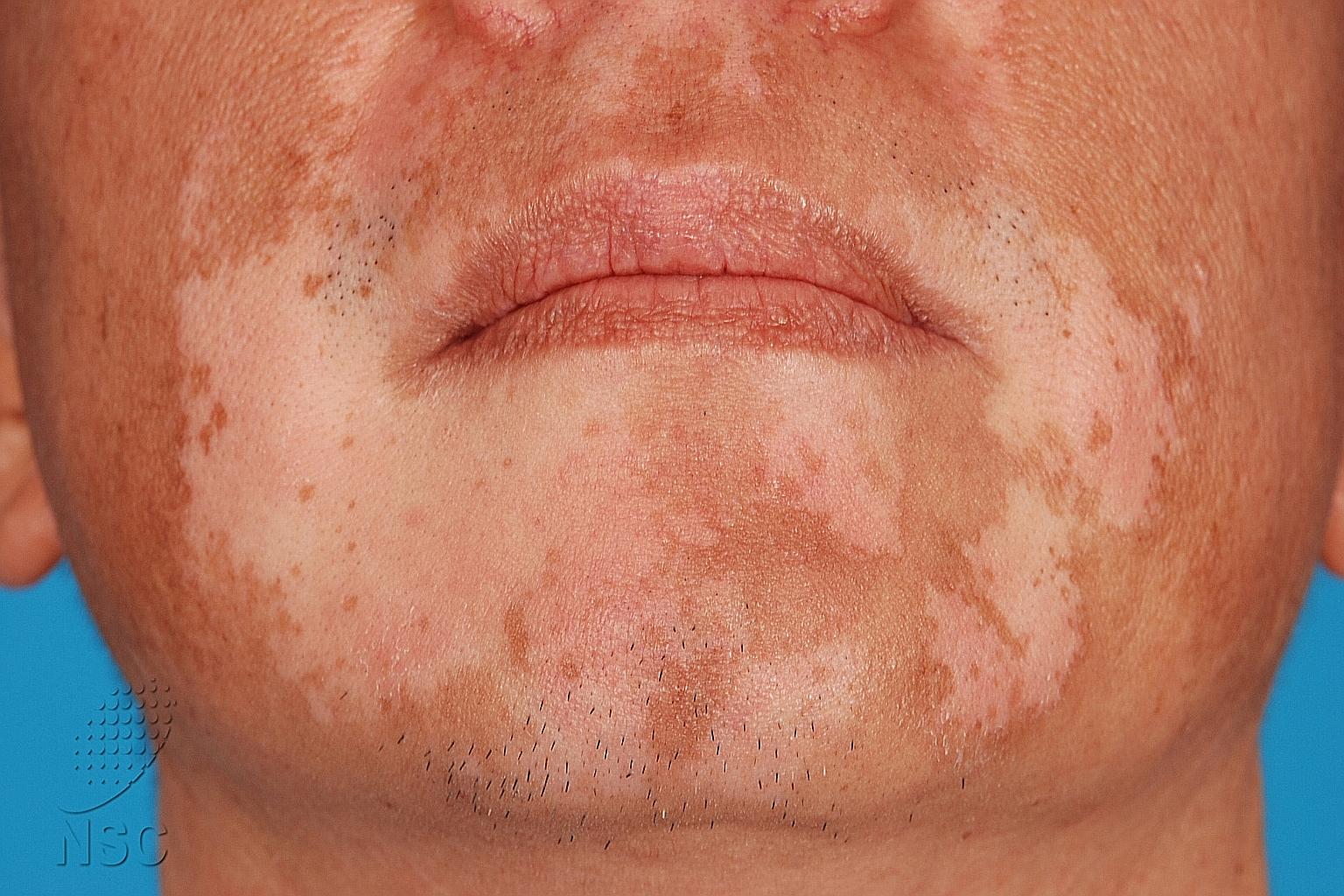Doc lauded for simple skin treatment solution
Use of portable machine to treat vitiligo at home instead of clinic improves results
Sign up now: Get ST's newsletters delivered to your inbox

Vitiligo is a condition characterised by pale patches developing on a person's skin. It is not dangerous, but can cause patients to become self-conscious about their appearance.
PHOTO: NATIONAL SKIN CENTRE
Follow topic:
Sometimes the simplest solutions are the most effective, as dermatologist Steven Thng has found.
Many of his patients at the National Skin Centre (NSC) have vitiligo, a disorder that causes unsightly pale patches on the skin.
In theory, treatment is straightforward. For nearly 70 per cent of patients, twice-weekly phototherapy sessions of up to 10 minutes each can improve the condition within six months.
The problem, said Dr Thng, is that many people do not follow through with treatment on a regular basis. "The actual fact is that (treatment) is not always successful because people don't come very often," he said.
His solution was simple: re-purpose a smaller, portable machine that uses ultraviolet light to treat a different skin condition, and loan it to vitiligo patients to take home.
Patients have to use the machine for longer - three times a week instead of twice - as the light is less powerful than it would be in a clinic. But it saves them the trouble of making their way down to the NSC, which is in Novena, often taking time off from work or school.
"It worked," he said. "It's very simple - you make it convenient for patients, and patients will do it."
For his efforts, Dr Thng was presented with the top Singapore Clinician-Investigator Award at the Singapore Health and Biomedical Congress, which opened yesterday and ends today.
Dr Thng did a study of 44 patients and found that seven in 10 of those who underwent the regular treatment followed through, with the rest stopping halfway or going to the NSC only once a week.
For the home phototherapy group, nine in 10 complied with the prescribed treatment sessions, and none withdrew from the programme.
And seven in 10 of those who went through the home treatment showed at least a 50 per cent improvement in skin colour, compared with about half for the other group.
"It's not because the machine (for home use) is better," Dr Thng explained. "It's because the patients were more compliant."
Meanwhile, at yesterday's congress, the National Healthcare Group (NHG) and Nanyang Technological University also inked a three-year agreement to embark on a study to better understand disease in the local population.
Through the study, which will involve 10,000 people, they hope to be able to predict and prevent diseases, and to see what kind of treatments work best.
Traditionally, said NHG chief executive Philip Choo, doctors get to know about illnesses only after they get bad enough to make a person see a doctor.
He said: "We want to go upstream, to see what are the things that cause illnesses... and what intervention works or doesn't work."

